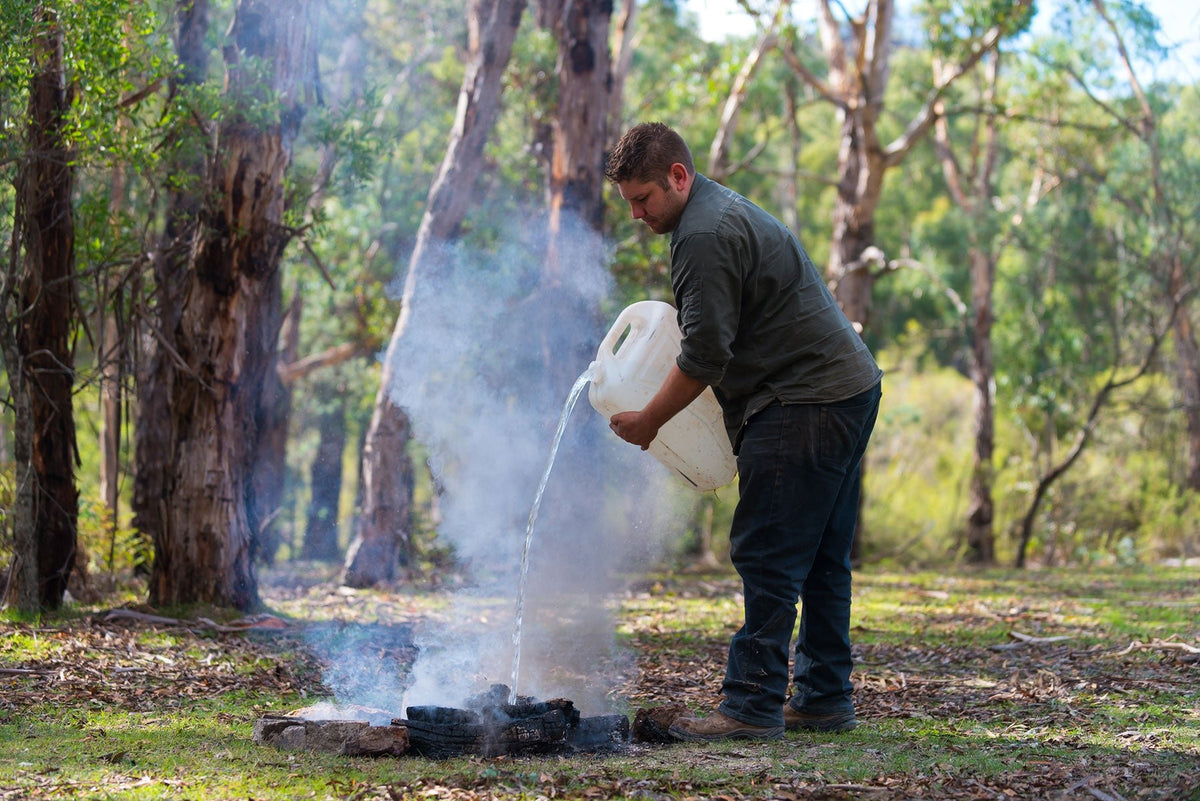
Camping safety: How to stay safe around fires this summer
|
|
Time to read 7 min
|
|
Time to read 7 min
Australians are no strangers to the dangers of bushfires, but before we head out on a camping adventure we do need to stop and consider how we can make sure we’re being fire-safe while on the road and camping.
Our country is a land of extremes, and much of its native flora is designed to ignite, and in many cases, it needs to do so as a part of its regenerative process. While this is a natural cycle, it does mean we have to be extra vigilant and aware of fire dangers when camping.
Each year fire services throughout Australia do what they can to help reduce the risk of catastrophic events, including back burning and clearing land of flammable debris, however, it’s everyone’s responsibility to do their part.
While you’re travelling, keep an eye on conditions and fire safety ratings, which will be displayed on large signs along highways throughout the country, or check online before you set out.
One factor that can be easy to forget when you’re thinking about fire dangers is your vehicle and camper. Both your vehicle and camper should be kept in prime condition so that they don’t become a fire hazard. Check electrical connections and gas lines, as well as anything that might spark, and check that all appliances are in good condition.
Don’t forget to keep the undercarriage clear of leaves, small twigs, branches, grass and other fire hazards at all times.
Before you head off, make sure you’re well stocked with fire safety equipment such as a fire blanket and dry-powder extinguisher. All fire extinguishers need to be inspected and serviced regularly.
Plan your journey and campsites ahead of time and keep an eye on what the conditions will be as well as the local Total Fire Bans. Not every state and territory has the same rules at the same time of year, so it’s always best to familiarise yourself with these ahead of time. Some places will prohibit you from using a generator, while others have a blanket ban on everything from campfires to recreational four-wheel driving.
There’s not only the risk of sparking a bushfire either. Breaking the laws around fire bans can result in some serious penalties, including five-figure fines or prison time.
Always act early when it comes to the risk of a bushfire. This blanket rule can cover everything from reducing the danger by going flame-free to begin with, to leaving a place that’s under threat. The best way to deal with a dangerous situation is to never encounter it in the first place.

When travelling, avoid areas close to active blazes. This not only ensures your own safety but also keeps roads clear for emergency services.
However, if you do find yourself in an area with an active bushfire or backburning, keep your windows up, switch on your headlights and drive with extreme caution. All road rules, temporary road closures and so forth should be obeyed, and don’t stop anywhere longer than absolutely necessary.
Campfires, when permitted, can be great fun for the whole family and open up a wide range of tried-and-true campfire recipes. But ample care must be taken to ensure these campfires remain safe, both for you and the surrounding area.
As mentioned, always check if campfires are permitted in your area first. While there may not be a Total Fire Ban, certain campsites and national parks will have their own fire restrictions.
It’s also important to check current and forecasted weather conditions before lighting a campfire, as high temperatures, strong winds and dry spells can increase the risk of wildfires.
Campfires should always be lit carefully, no matter the season or weather, but particular care should be taken during the drier months where one stray spark can quickly cause a fire. Always avoid lighting any solid fuel fires during the drier months and fire season.



Every state and territory has its own rules, so check with your relevant fire authority for specific information on your area.
In the case of an emergency, call 000.
NSW — Rural Fire Service (RFS)
P: 1800 679 737
W: rfs.nsw.gov.au
Vic — Country Fire Authority (CFA)
P: 1800 226 226
W: cfa.vic.gov.au
Qld — Queensland Fire and Emergency Services (QFES)
P: 13 74 68
W: qfes.qld.gov.au
SA — Country Fire Service (CFS)
P: 1300 362 361
W: cfs.sa.gov.au
WA — Department of Fire and Emergency Services (DFES)
P: 13 33 37
W: dfes.wa.gov.au
Tas — Tasmania Fire Service (TFS)
P: 1800 000 669
W: fire.tas.gov.au
NT — Northern Territory Fire and Rescue Service
P: 08 8999 3473
W: pfes.nt.gov.au
ACT — ACT Emergency Services Agency
P: 13 22 81
W: esa.act.gov.au

Are you ready to experience the freedom of the open road? Don't wait - Find your dream getaway now!
CIAA's vision for rural road safety